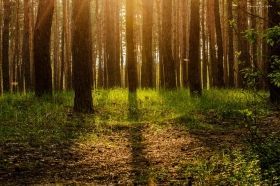
Cleaning up beaches could boost local economies in addition to preserving natural treasures and animal habitats.
In southern California’s Orange County alone, the economic benefits of beach cleanup could range from $13 per resident in a three-month period if debris were reduced by 25 percent to $42 per resident with a 75 percent drop in plastics and other trash along the oceanfront, according to a new study. That could mean up to a $46 million boost to the county’s economy in just one summer.
>> Read the Full Article

Researchers at the University of East Anglia have discovered a key gene for the synthesis of one of the world’s most abundant sulfur molecules.
Dimethylsulfoniopropionate (DMSP) is an important nutrient in marine environments with more than one billion tonnes produced annually by marine phytoplankton (microscopic plant-like cells), seaweed and bacteria.
>> Read the Full Article

New research published today in Nature Ecology & Evolution demonstrates the extraordinary value of Earth’s remaining intact forests for addressing climate change and protecting wildlife, critical watersheds, indigenous cultures, and human health. Yet the global policy and science communities do not differentiate among the relative values of different types of forest landscapes—which range from highly intact ones to those which are heavily logged, fragmented, burnt, drained and/or over-hunted—due in part to the lack of a uniform way of measuring their quality.
>> Read the Full Article

According to the Intergovernmental Panel on Climate Change, temperatures are expected to rise between 2.5 and 10 degrees Fahrenheit over the next century. This warming is expected to contribute to rising sea levels and the melting of glaciers and permafrost, as well as other climate-related effects. Now, research from the University of Missouri suggests that even as rising carbon dioxide levels in the atmosphere drive the climate toward warmer temperatures, the weather will remain predictable.
>> Read the Full Article

 ENN
Environmental News Network -- Know Your Environment
ENN
Environmental News Network -- Know Your Environment